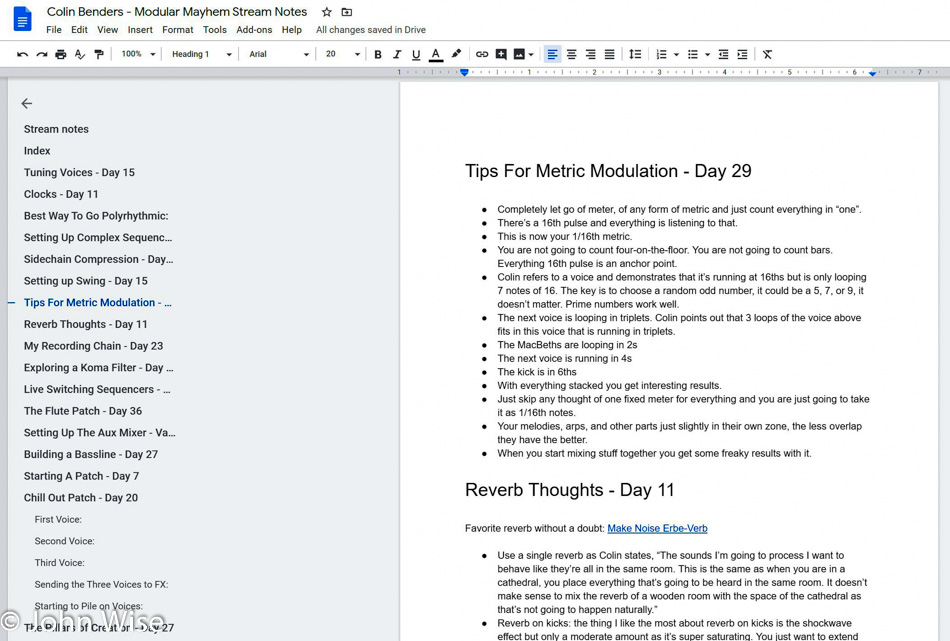
We are watching the Indie live music industry change with an emergent streaming movement that is happening by necessity because the club and concert hall have temporarily disappeared. People’s need for grouping around artists is still a large part of the context of our culture, but the venues that support these activities are closed. There is no certainty as to when public gatherings might take place again, so in the wake of our global shutdown; there are those who are going live on the internet.
In some way, I see this as the Westernization of the Japanese idea of the otaku. This type of person was seen as being obsessed with particular aspects of popular culture to the detriment of their social skills. Right now, our social skills are on hold as we become accustomed to being at home. For the majority of the global population, being ripped out of the social fabric that was our day-to-day existence was obviously not something cultivated over the early years of our life, as might occur to the young Japanese person who gradually becomes an otaku.
In an instant, though, we were rendered homebound. While students took to Zoom for group conferencing with their teachers and fellow students and companies also started meeting more frequently on everything from Zoom to Skype, Teams, and WebEx, there was something afoot in the music world that is largely unknown to the masses right now.

We are starting to see the emergence of the #STREAMPUNKS. The term, as far as I can find, was first used in a forum back in January 2008 before being co-opted by an executive for YouTube for his 2017 book titled Streampunks: YouTube and the Rebels Remaking Media. While Robert Kyncl and his co-author Maany Peyvan used the term to mean those in the content creation business on YouTube, today it is again being redefined as “Those who move en masse between content streams.”
Back on March 18, 2020, almost two years to the day after he paused his live streams, Colin Benders, a synthesist from Utrecht, Netherlands, started broadcasting again. There was obvious pent-up demand to see him play on his extraordinary electronic instrument. I say instrument as Colin is approaching mastery over his Eurorack synthesizer, which is a beast of complexity.
During the first week, we watched Colin sitting on his floor in a small room in his home with a few sections of his modular rig he brought from his studio. Even his small sample of modules represented a large system for most other people. Specifically, he was working on 1,264hp. Squatting in front of it and patching it on the fly, he was making some banging techno for a few hours and mixing things up as he went along.

On the second day of his return to streaming, with a commitment to do this “every day” that he’s in lockdown (hence the stream name “Modular Lockdown”), he started up a Discord channel. While I was one of the first half-dozen people to sign up it wasn’t but a week or two before a couple of thousand people joined the channel. The buzz around Colin was becoming a swarm.
Part of this might have had something to do with the fact that Colin was promising never to charge any of us for the music he was streaming, but, more importantly, that it was his intention to give it all away to others to work on remixes and derivative works. Things were getting complicated fast as Colin wasn’t set up quite correctly yet, and the infrastructure was about to buckle.
By Day 8, Colin was standing at a wobbly primitive desk, and so began the community effort of donating money through YouTube Super Chat for Colin to buy a proper Ikea desk. He had by this time also collected a couple of other things including a mixing desk that would let him properly record 16 tracks of audio, thus producing what is known as STEMS. A STEM is typically the stereo master track and the individual grouped components such as the bassline, lead, drums, and harmony.
These STEMS were going to be put on Dropbox for collaborators to download, but within about 48 hours, his bandwidth allocation was maxed, and a new solution had to be found. His users on Discord organized the infrastructure by seeding Torrents around the world so the gigabytes of data could start being shared again.

The foundation of a large group of people working independently through a faceless interface in the background of an artist, with everyone volunteering their efforts, was taking root and moving at a breakneck speed. Some of us who’d been on the stream from day one and even some of us who were watching him back during his “Modular Mayhem” days of 2016 to 2018 were recognizing one another. One of those users, named Datalek, dropped the word STREAMPUNKS on YouTube in live chat to describe the gang that was jumping from Colin’s stream to other artists’ streams. From that moment forward, the group of people who started on Colin’s stream would start dropping #STREAMPUNKS into the live chat of the person we were switching to.
Fast forward to Day 20, and Colin brings in his prized MacBeths along with more gear. The “MacBeths” I refer to are some of the best-sounding oscillators there are but which are also considered “Unobtainium.” There were now 2,344hp of modules stuffed into this small side room with a 16-channel mixing desk on the floor to Colin’s right. The mini-side room studio was growing, and so was the audience. Discord ballooned to over 2,500 people, and others such as Hainbach, DivKidBen, and Chris Meyer at Learning Modular were appearing more often in live streams. Streampunks were starting to be recognized by others in the community.
So how and why is this becoming a thing worth dedicating this blog entry to? Live music experienced in person, for the time being, is a thing of the past. To have an artist who is interacting with his/her global audience on a very personal level on a daily basis is something new. While certainly not the first musician to interactively stream to fans, as DeadMau5 was already on Twitch back in 2014 building his community, there is a big difference in approaches.

Colin is engaging with his audience on multiple levels redefining how the relationship between artist and community functions. He’s actively sharing his skills and explaining his techniques to such a level that I’ve been able to document in a Google Doc on Discord under the #ACADEMY heading a number of patches and the thoughts behind his methods. Not only is this freely posted for others to learn from but the document is meant as part of a collaboration space. While many are followers, there is an active number of enthusiasts who are also musicians trying to learn more about the difficult task of patching voltages and signals across disparate modules that can be mind-numbingly problematic.
As for the vibrant audience that has formed, we are recognizing each other and forming friendships via chats that are occurring simultaneously as Colin is performing. It’s in some way reminiscent of Andy Warhol’s Factory days when artists such as David Bowie, Mick Jagger, Salvador Dali, and Lou Reed would be part of a New York City “Scene.” Today, the scene is being played out in live moments that stretch around the globe. While few might know the likes of Datalek, Alphastare, PifPaf пиф паф, Omri Cohen, or Knobs&Strings, there is a vibe that suggests we are in one of those epochs that could be a turning point within one small corner of culture that is going to have larger implications for society at large.

Back on Day 20, while deconstructing Colin’s performances and being captivated by the music that rose out of nothing, I wrote: I can’t help but feel I’ve been watching a modern-day Richard Wagner compose in real-time the electronic version of Ride of the Valkyries where aural paintbrushes are harnessed with patch cables to splash love onto the canvas of emotion.














